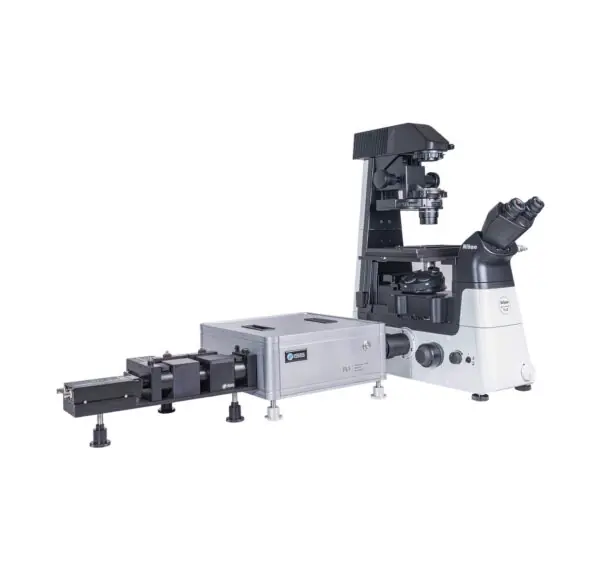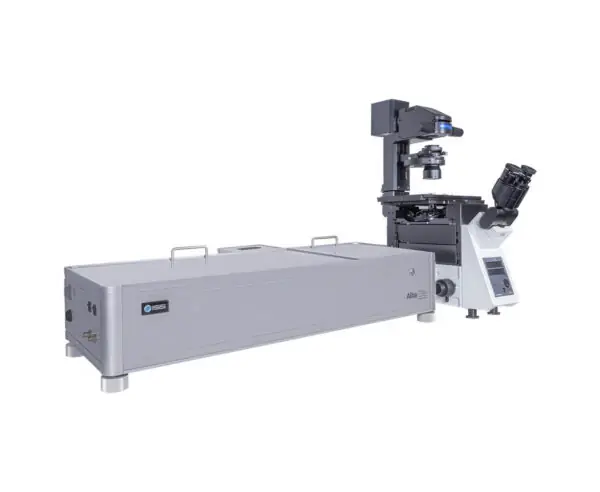The Confocal microscope – Modular offers a compact and fast solution for quantitative live-cell biology and high-precision fluorescence imaging. Thanks to its modular design, the system can be flexibly adapted to various research requirements. The Q2 microscope enables the acquisition of confocal images, FLIM data, and various fluorescence fluctuation spectroscopy measurements such as FCS, FCCS, PCH, Scanning FCS, RICS, and Number & Brightness (N&B).
The system also supports single- and multiphoton excitation and can be combined with various laser sources. The standard configuration includes two detection channels and a multiphoton laser with a 780 nm wavelength, although a Ti:sapphire laser, a supercontinuum laser, or a single-photon laser can also be connected. Finally, the high-performance detectors (GaAs PMT, Hybrid PMT, or APD) ensure the highest sensitivity and image quality.
Outstanding imaging technologies
The Q2 confocal microscope It boasts a variety of innovative imaging technologies. It offers 1P or 2P confocal imaging in x, y, z, and t, while fluorescence lifetime measurements can be performed both in the frequency domain (FastFLIM) and with time-resolved single-photon counting (TCSPC). Furthermore, phosphorescence lifetime imaging (PLIM) enables detailed analyses of long-lived fluorophores.
Furthermore, the system enables high-precision single-molecule imaging, enabling the determination of FRET efficiency, stoichiometry, and burst analyses for molecular interactions. Finally, nanoimaging technology enables the reconstruction of dynamic structures with a resolution of up to 20 nm, providing new insights into cellular mechanisms and biomolecular processes.
Versatile areas of application
Thanks to its modular architecture, the Confocal microscope – Modular for a wide range of applications. It is used in live cell research to visualize the dynamics of individual proteins and their interactions within the cell. Materials scientists also benefit from 3D particle tracking, which enables precise motion analyses in nanostructured materials. Furthermore, the system is used in pharmacology to investigate drug interactions and receptor binding mechanisms. Finally, the combination of confocal microscopy, FLIM, FCS, and nanoimaging opens up new possibilities for quantitative biology and biophysical research.
Contact
Do you have any questions about Q2 or do you need individual advice for your application? Please feel free to contact us – our team of experts will help you find the optimal solution for your requirements.




